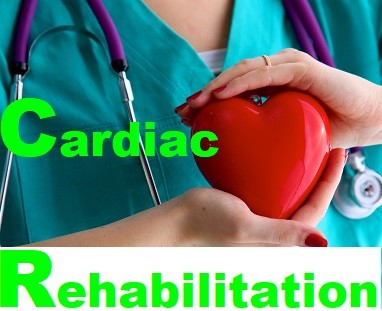Do women have a higher risk of a heart attack? The myth that coronary heart disease is a man’s disease has been dispelled in the scientific community and it is time for that myth to be dispelled in the larger community’s minds.
There are more women (32.2 million) in the UK than there are men (31 million) [1].
This also applies to most countries of the world, where women make up just over half the population.
Until the mid-1980s, representation of the health needs of women in medical research has lagged which has compromised the quality of health information available to women, as well as, the healthcare they receive.
This has positively changed since then and is continuously improving.
However, to this day women remain under-represented in scientific studies [2].
Statistics form the British Heart Foundation (BHF) show this [3,4]:
- 28,000 women in the UK die of a heart attack each year.
- That’s around 77 women dying of a heart attack in the UK daily.
- That’s one every three hours!!
- Coronary heart disease kills more than twice as many women as breast cancer does in the UK.
- Cardiovascular disease is the most common cause of death for women in the UK but not for men.
- There are nearly 3.5 million women living with cardiovascular disease in the UK today.
- This number is the same number for women and men.
Studies have reported that women in comparison with men have a higher incidence of heart failure and risk factors for coronary heart disease [5].
In general, women admitted to hospital due to heart attacks or who have stents implanted or perform coronary artery bypass grafting stay in hospitals longer than men and have a higher rate of complications, such as:
- Higher incidence of death in-hospital.
- More bleeding complications post-operatively.
- A higher re-admission rate of 30 per cent in the month following discharge form hospital [5].
Risk factors for Women
In general, risk factors for coronary heart disease are the same for men and women. However, several risk factors are more common in women in comparison to men, such as:
- Diabetes mellitus (high blood sugar).
- High blood pressure.
- Depression.
- Kidney problems
There are also some risk factors that are exclusive to women, such as:
- Menopause:
The risk of heart disease in pre-menopausal women is lower than in men of the same age. However, after menopause the risk of heart disease becomes similar between sexes [5].
- Hormone replacement therapy:
Despite the protective effects of endogenous (self-produced) oestrogen, studies of exogenous (from an outside source) oestrogen hormone therapy for the prevention of coronary heart disease in post-menopausal women have been negative.
Hormone replacement therapy does not prevent the progression of atherosclerosis (deposition of fats inside blood vessels). On the contrary, it precipitates heart attacks in older women [6].
Accordingly, the Women’s Health Initiative and current clinical practice guidelines have indicated that postmenopausal hormone therapy is not suitable for the prevention of coronary heart disease [7].
- Pregnancy:
Many heart protecting medications need to be interrupted for a woman to get pregnant due to their harmful effect on the developing foetus [5], such as:
- Lipid lowering medications (statins).
- So-called ACE-inhibitors and ARBs (important medications used for the treatment of high blood pressure and heart failure).
Stopping such therapy puts a woman with heart disease at risk during her planned pregnancy.
In addition, a rare, but potentially fatal condition, called “spontaneous coronary artery dissection” (SCAD) is associated with pregnancy and the post-partum period [8].
- Hormone contraceptives:
Regardless of their form (pills or injections) hormone contraceptives are made from exogenous oestrogen which is harmful. They have also been associated with the occurrence of SCAD and with a higher risk of stroke [8].
Of course, this is in addition to the traditional risk factors for coronary heart disease, such as:
1. Smoking.
2. Physical inactivity.
3. Unhealthy diet.
4. Obesity.
5. Advanced age
6. Having a close family member with a history of early heart disease.
7. History of preeclampsia during pregnancy.
Do you want to achieve your weight loss, fitness or a health goals?
Contact Jazz Alessi, the best Personal Trainer in Shoreditch by clicking on this link now, here !
Spotting the right signs of a Heart Attack in Women [5,9,10]
The pathology (science behind the cause) of coronary heart disease in women is different than that occurring in men. In such a way that they commonly suffer from the so-called “non-occlusive coronary artery disease” meaning that they develop extensive narrowing of the blood vessels supplying their hearts without that leading to total obstruction of the blood vessels.
That might sound good, but it leads to women having a delayed presentation of their symptoms for a heart attack (making them present at an older age than men) due to narrowing that builds up over many years without being discovered until symptoms appear and when they do they are often vague and atypical (non-routine) symptoms that can be easily missed by doctors.
Women also sometimes suffer from unusual causative mechanisms for coronary heart disease such as SCAD (which is a sudden tear that occurs in the inner lining of coronary blood vessels leading to the development of a sudden heart attack with no apparent cause or risk factors) or coronary artery spasm.
Thus, the signs and symptoms of a heart attack can be slightly different in women as compared to men. Women often present with:
- Atypical characters of chest pain (sharp, burning, aching or soreness).
- Pain in the upper back, arm, neck, and jaw.
- Shoulder pain and arm pain are twice as predictive of a heart attack in women compared with men.
- Shortness of breath.
- Sense of tiredness or fatigue.
- Stomach pain or sense of indigestion.
- Nausea and vomiting.
- Awareness of heart beats (palpitations).
- A sense of dread.
These unusual symptoms lead to delayed identification of heart attacks and hence delayed management. Women thus have longer presentation and treatment times, and accordingly have worse rates of in-hospital mortality. This explains why rates of death from a heart attack a larger in women compared to men.
Heart disease is preventable: Take care of yourself
Women must be made aware of the major risk factors for coronary heart disease. This is done so they could make changes that prevent the development of a heart attack. Many girls and women don’t realise they can be at risk of heart disease [5].
Here are some of the things you could do:
- Attend regular medical check-ups:
No matter what your age is, always consider performing your regular medical check-ups on time. Immediately consult with your physician if you experience any of the symptoms mentioned above.
- Quit smoking:
If you smoke, it’s time to give it up completely and not just cut down to protect yourself from future heart attacks.

- Cut down on alcohol:
Women who drink alcohol should keep weekly consumption to no more than 14 units per week and to avoid binge drinking (more than three alcoholic drinks in two hours) [11].
Eliminating alcohol in full is always best!
- Start exercising:
Get on your feet and move. Regular physical exercise is vital for a healthy heart but, watch out how you do it and exercise under close supervision of an elite personal trainer in London.
Do you want to achieve your weight loss, fitness or a health goals?
Contact Jazz Alessi, the best Personal Trainer in Shoreditch by clicking on this link now, here !
- Modify your diet:
Consume a diet rich in fruits, vegetables, whole grains, and high-fibre foods. Limit intake of saturated fat, cholesterol, sodium, and sugar. Avoid trans fatty acids [12].
- Be aware of your blood pressure and blood cholesterol level:
Get measured for both if you haven’t before.
If any or both happen to be elevated they should be managed by both medications and lifestyle modifications.
- Body mass index (BMI) and weight:
Women should maintain or lose weight using a balance of physical activity, caloric intake, and behaviour-adjustment programmes to maintain or achieve a BMI less than 25 kg/m2 and a waist circumference less than 89 cm [12].

Do you want to achieve your weight loss, fitness or a health goals?
Contact Jazz Alessi, the best Personal Trainer in Shoreditch by clicking on this link now, here !
- Keep a healthy positive psyche:
Because women experience higher lifetime rates of depression than men, women should recognise the importance of maintaining good mental health through exercise, diet, and social networking [13].
Need for a Professional Elite Personal Trainer for Women
Women face special challenges when it comes to their health and particularly physical activity participation.
Hence, it is more important for them to get an Elite Personal Trainer who can guide them through the process of keeping their hearts healthy while at the same time providing them with a healthy diet plan.
Women experience more life transitions than men.
From puberty and the changes that accompany it in body and mood, to the monthly changes accompanying their periods and the stress that might be present.
To social challenges as leading an independent life and going to work, to marriage and the responsibilities accompanying it.
Then comes pregnancy and motherhood and the demanding lifestyle accompanying it. These regular and constant life changes have a significant impact on their levels of participation in physical activity [14,15].
Motivation is vital to maintain high levels of participation.
That’s why it is important to have someone, a group or a programme that understands the key psychological and social forces at work to enable women to pass through these transitions smoothly and establish a level of physical activity which will keep their health in good standing throughout their life [14,15].
Lack of motivation has been associated with detrimental effects on women’s ability to participate in regular physical activity.
Participation is motivated by levels of enjoyment and the development and maintenance of support networks. Barriers to participation include transition phases at key stages of life and having to adjust during these times [14,15].
A professional elite personal trainer will provide you with a diet plan for weight loss that is tailored to your dietary taste and considers the type and timing of the physical training you should be performing.
In addition, you may be provided with detox diets for weight loss.
Personalised detox diets are popular dieting strategies that may facilitate toxin elimination and weight loss, thereby promoting health and well-being. [16]
Personalised Nutrition Diet Plan for Weight Loss by Jazz Alessi
I am an Elite Personal Trainer, Clinical Exercise Specialist, 2nd Generation Pilates Trainer, Harley Street London Nutritionist and Weight Loss Expert.
I offer certified nutrition consultations and fitness programmes tailored to my clients’ needs.
I help my clients with advanced weight loss management, sports nutrition, safe return to fitness and cardiac rehabilitation.

My philosophy is:
Perfect nutrition personalisation to your needs, “Clean Food – Lean Bodies!” containing your comprehensive nutrition diet plan and providing you with the best nutritional support services in London and anything else you will require.
You have everything in one convenient place and I’m just one call away.
I fully understand the challenges you might face in adhering with nutrition programmes and will successfully support you achieve your fitness and health personalised goals.
Do you want to achieve your weight loss, fitness or a health goals?
Contact Jazz Alessi, the best Personal Trainer in Shoreditch by clicking on this link now, here !
References
- 2011 Census: Population Estimates for the United Kingdom, March 2011
- Institute of Medicine (US) Committee on Women’s Health Research. Women’s Health Research: Progress, Pitfalls, and Promise. Washington (DC): National Academies Press (US); 2010.
- British Heart Foundation. Cardiovascular Disease Statistics 2017.
- Bhatnagar P, Wickramasinghe K, Williams J, et al The epidemiology of cardiovascular disease in the UK 2014 Heart 2015;101:1182-1189.
- Mehta L, Beckie T, DeVon H et al. Acute Myocardial Infarction in Women: A Scientific Statement From the American Heart Association. Circulation. 2016 Mar 1;133(9):916-47. doi: 10.1161/CIR.0000000000000351.
- Mosca L, Benjamin E, Berra K, et al. Effectiveness-based guidelines for the prevention of cardiovascular disease in women—2011 update: a guideline from the American Heart Association. Circulation. 2011;123:1243–1262. doi: 10.1161/CIR.0b013e31820faaf8.
- Rossouw J, Manson J, Kaunitz A, et al. Lessons learned from the Women’s Health Initiative trials of menopausal hormone therapy. Obstet Gynecol. 2013;121:172–176. doi: http://10.1097/AOG.0b013e31827a08c8.
- Tweet M, Hayes S, Pitta S, et al. Clinical features, management, and prognosis of spontaneous coronary artery dissection. Circulation. 2012;126:579–588. doi: 10.1161/ CIRCULATIONAHA.112.105718.
- Lau E, O’Donoghue M, Hamilton M et al. Women and Heart Attacks. Circulation. 2016 Mar 8;133(10):e428-9. doi: 10.1161/CIRCULATIONAHA.115.018973.
- Odle T. Women and heart disease. Radiol Technol. 2013 Sep-Oct;85(1):37-56.
- National Institute for Health and Care Excellence. Secondary prevention in primary and secondary care for patients following a myocardial infarction. Clinical guideline 172. London: National Institute for Health and Care Excellence (NICE); 2013.
- Kohli P. Primary and secondary prevention of ischemic heart disease in women. Curr Atheroscler Rep. 2015 Jul;17(7):38. doi: 10.1007/s11883-015-0518-5.
- Yusuf S, Hawken S, Ounpuu S, et al. INTERHEART Study Investigators. Effect of potentially modifiable risk factors associated with myocardial infarction in 52 countries (the INTERHEART study): case-control study. Lancet. 2004;364:937–952. doi: 10.1016/S0140-6736(04)17018-9.
- Allender S, Cowburn G, Foster C. Understanding participation in sport and physical activity among children and adults: a review of qualitative studies, Health Education Research, 2006;1:826–835. doi: 10.1093/her/cyl063
- Coleman L, Cox L, Roker D. Girls and young women’s participation in physical activity: psychological and social influences, Health Education Research, 2008; 4:633–647. doi: 10.1093/her/cym040
- Klein A, Kiat H. Detox diets for toxin elimination and weight management: a critical review of the evidence. J Hum Nutr Diet. 2015 Dec;28(6):675-86. doi: 10.1111/jhn.12286.
Disclaimer: This website and all its content is to be used for information purposes only. This website or any of its content or links to third parties does not diagnose, advise, treat or cure any ailments, illness or disease.
You agree to hold harmless the owner of this site for any action taken on your own without consulting your medical doctor first by using the information on the website for diagnostic, treatment, or any other related purposes. This is not medical advice. If you are suffering from any illness, disease or ailments please contact your doctor first and immediately.



